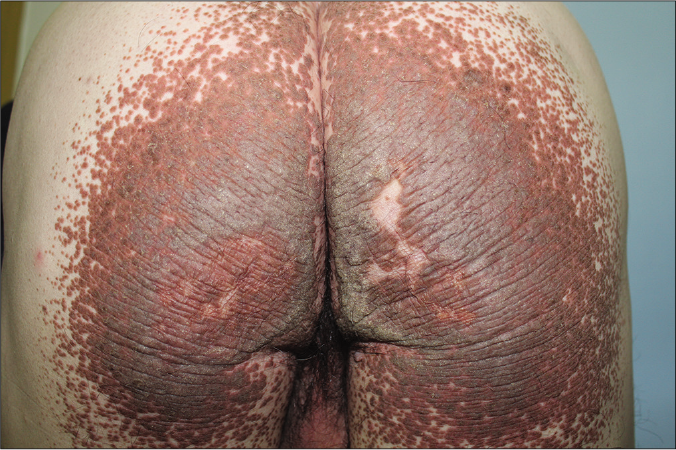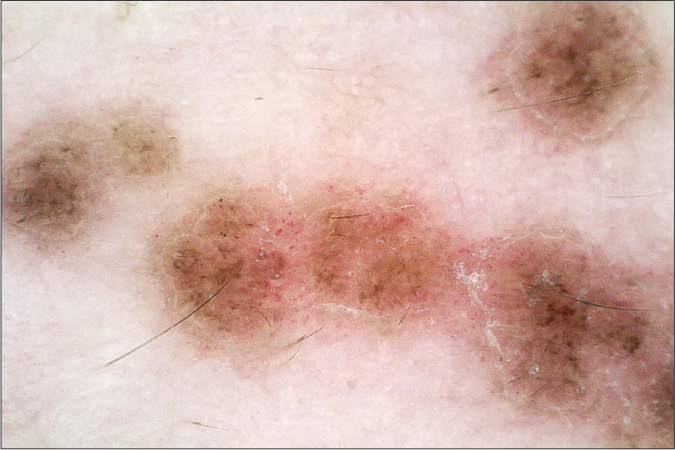Translate this page into:
Porokeratosis ptychotropica on the buttocks
Corresponding author: Jianqing Feng, Department of Dermatology, Taicang Hospital of Traditional Chinese Medicine, Suzhou, China. fjq1688@126.com
-
Received: ,
Accepted: ,
How to cite this article: Feng Y, Feng J, Bao J. Porokeratosis ptychotropica on the buttocks. Indian J Dermatol Venereol Leprol 2023;89:288.
A 63-year-old man presented with a 20-year history of itchy, reddish-brown, well-demarcated, bilateral and symmetrical hyperkeratotic plaques on the buttocks, along with peripheral discrete papules [Figure 1a]. There was no similar family history. He was a known diabetic for five years and denied the use of immunosuppressants. Dermoscopy showed well-circumscribed areas with central scar like structures, peripheral scaling, irregular punctate and globular vessels along with brown pigment granules on a reddish brown background [Figure 1b]. Skin biopsy showed parakeratotic columns intercalating epidermis in some areas, in which dyskeratotic cells could be seen, and a lymphocytic infiltrate in the upper dermis, confirming the diagnosis of porokeratosis ptychotropica. The cause of this, may be due to the frequent mechanical friction by long term farming. Porokeratosis ptychotropica is a rare variant of porokeratosis initially described in 1995. It is clinically characterized by a keratotic ridge with a central groove and histologically by cornoid lamella which is the key to differentiate it from neurodermatitis, chronic eczema, psoriasis and epidermal nevus. Though effective therapeutic strategies are lacking, early diagnosis of this condition is important as there is 7.5% to 11% risk of malignant transformation.

- Well-demarcated, reddish- brown, bilateral and symmetrical plaques with hyperkeratotic surface on the buttocks along with peripheral discrete papules

- Well-circumscribed areas with central scar-like structures, peripheral scaling, irregular punctate and globular vessels along with brown pigment granules on a reddish brown background
Declaration of patient consent
The authors certify that they have obtained all appropriate patient consent.
Conflicts of interest
There are no conflicts of interest.
Financial support and sponsorship
Nil.





